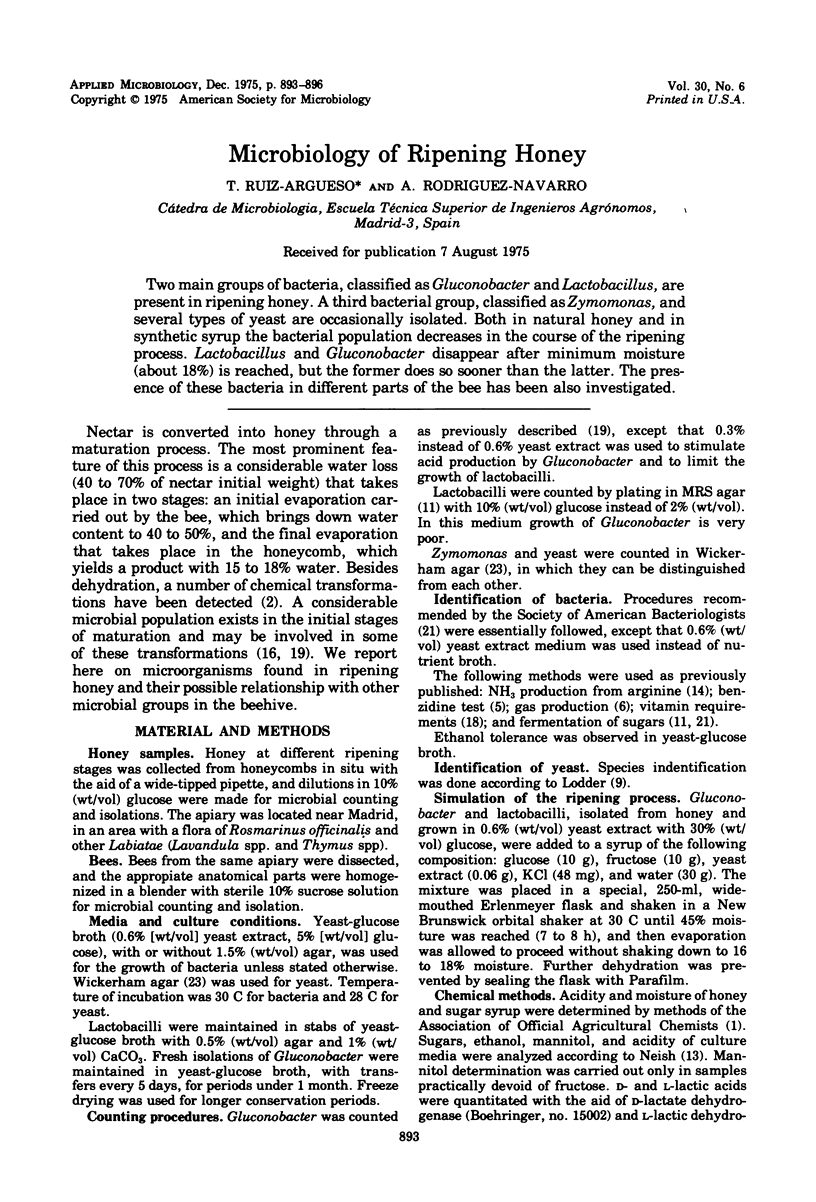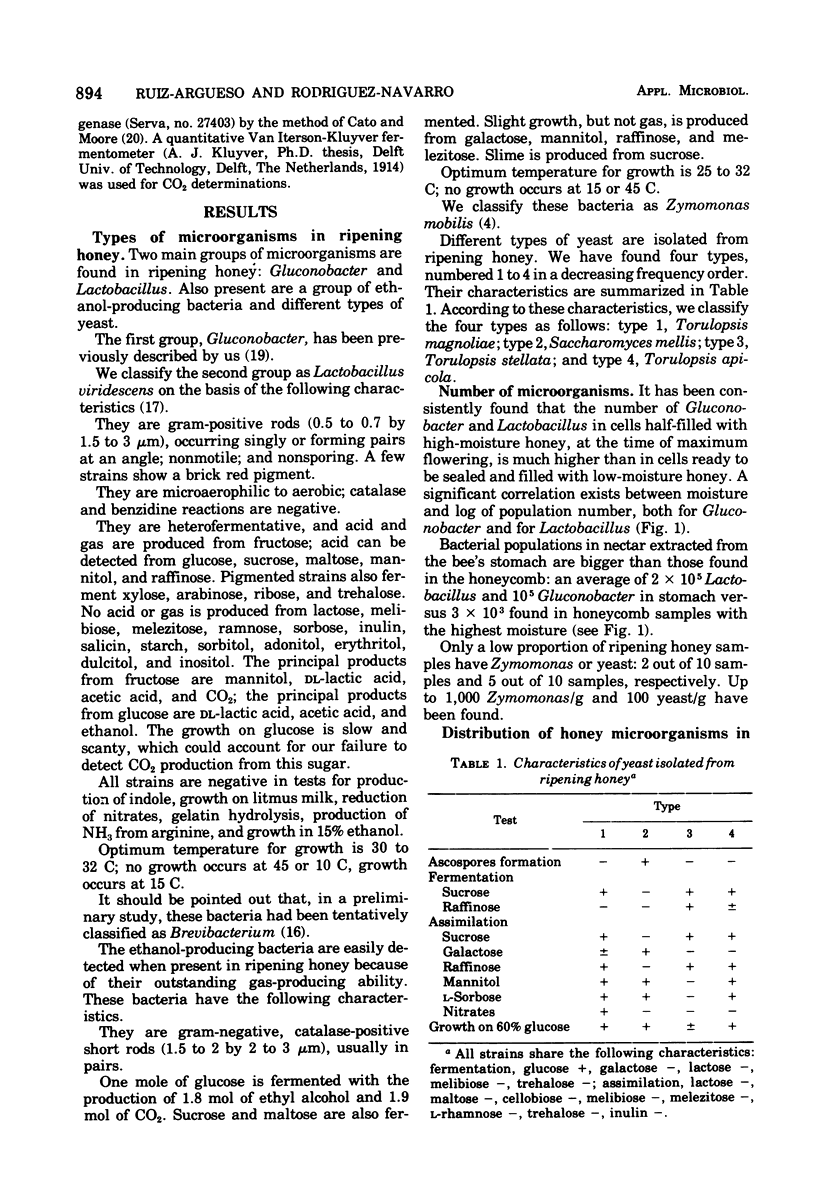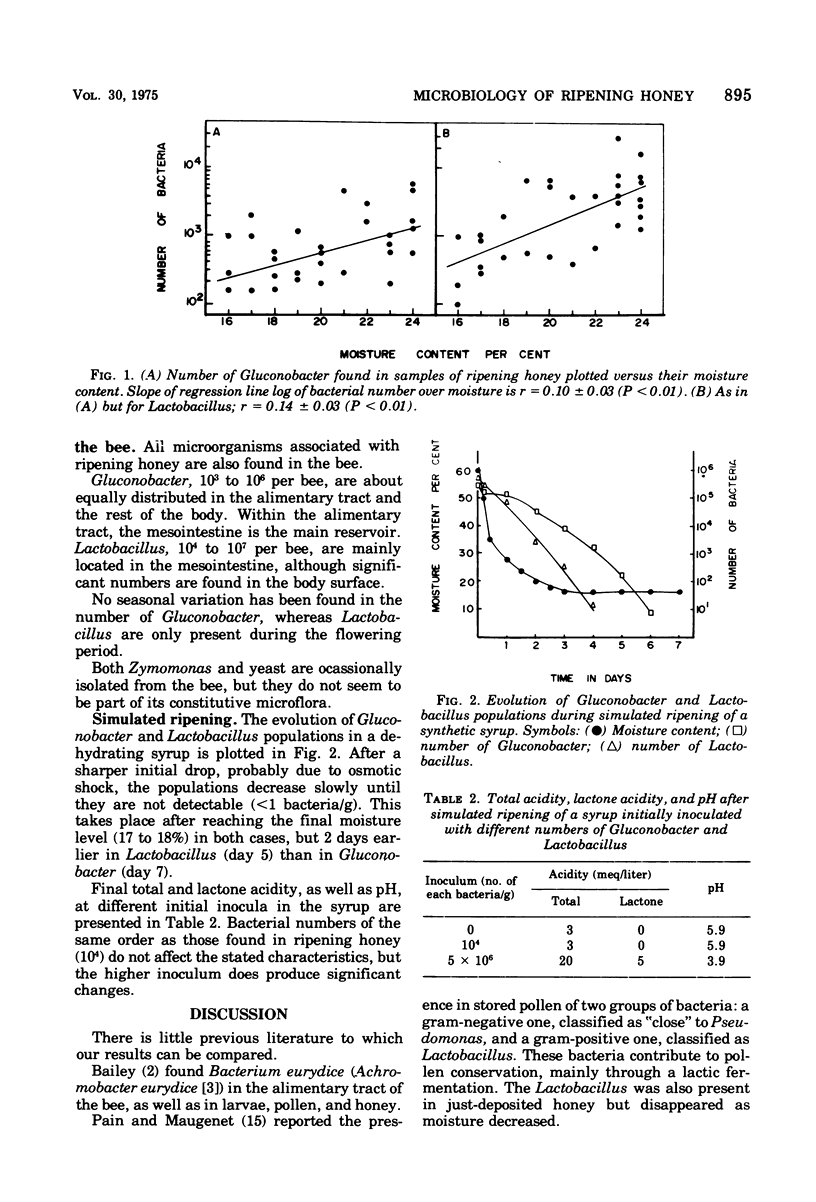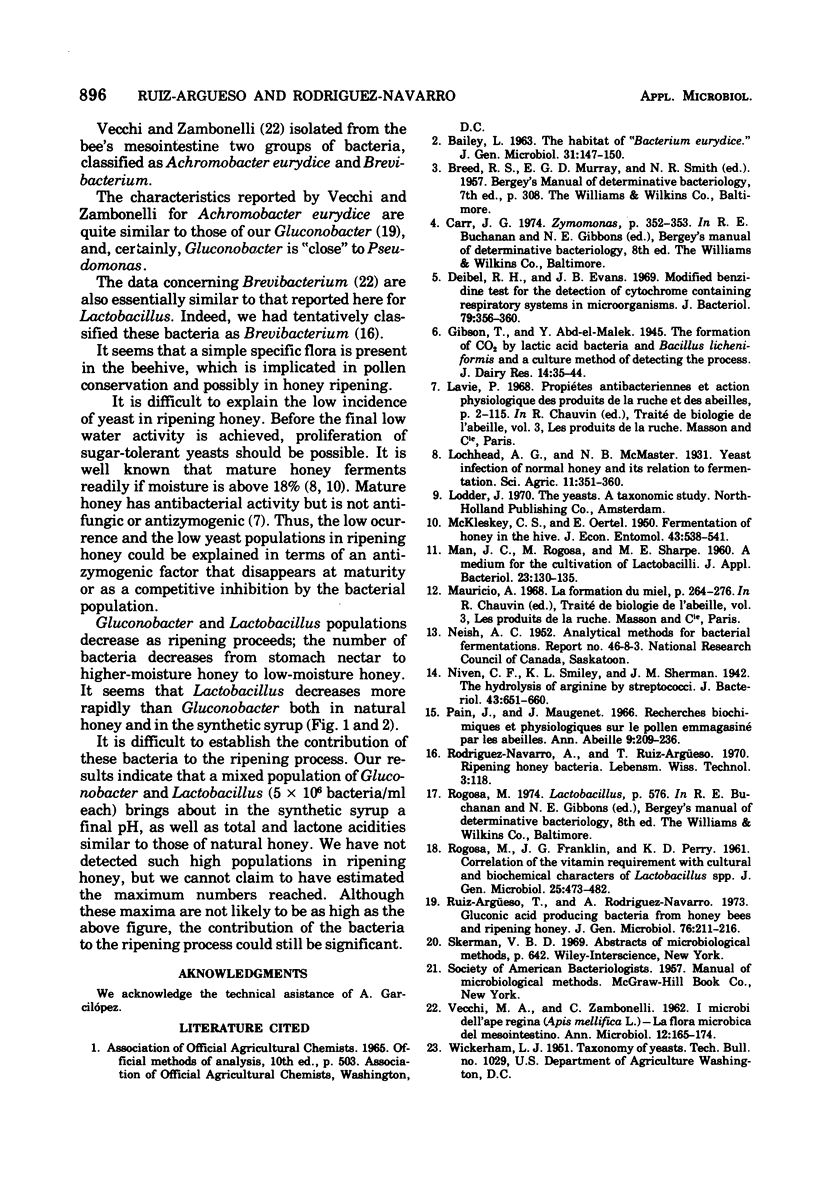Abstract
Two main groups of bacteria, classified as Gluconobacter and Lactobacillus, are present in ripening honey. A third bacterial group, classified as Zymomonas, and several types of yeast are occasionally isolated. Both in natural honey and in synthetic syrup the bacterial population decreases in the course of the ripening process. Lactobacillus and Gluconobacter disappear after minimum moisture (about 18%) is reached, but the former does so sooner than the latter. The presence of these bacteria in different parts of the bee has been also investigated.
Full text
PDF



Selected References
These references are in PubMed. This may not be the complete list of references from this article.
- DEIBEL R. H., EVANS J. B. Modified benzidine test for the detection of cytochrome-containing respiratory systems in microorganisms. J Bacteriol. 1960 Mar;79:356–360. doi: 10.1128/jb.79.3.356-360.1960. [DOI] [PMC free article] [PubMed] [Google Scholar]
- Niven C. F., Smiley K. L., Sherman J. M. The Hydrolysis of Arginine by Streptococci. J Bacteriol. 1942 Jun;43(6):651–660. doi: 10.1128/jb.43.6.651-660.1942. [DOI] [PMC free article] [PubMed] [Google Scholar]
- ROGOSA M., FRANKLIN J. G., PERRY K. D. Correlation of the vitamin requirements with cultural and biochemical characters of Lactobacillus spp. J Gen Microbiol. 1961 Jul;25:473–482. doi: 10.1099/00221287-25-3-473. [DOI] [PubMed] [Google Scholar]
- Ruiz-Argüeso T., Rodriguez-Navarro A. Gluconic acid-producing bacteria from honey bees and ripening honey. J Gen Microbiol. 1973 May;76(1):211–216. doi: 10.1099/00221287-76-1-211. [DOI] [PubMed] [Google Scholar]


